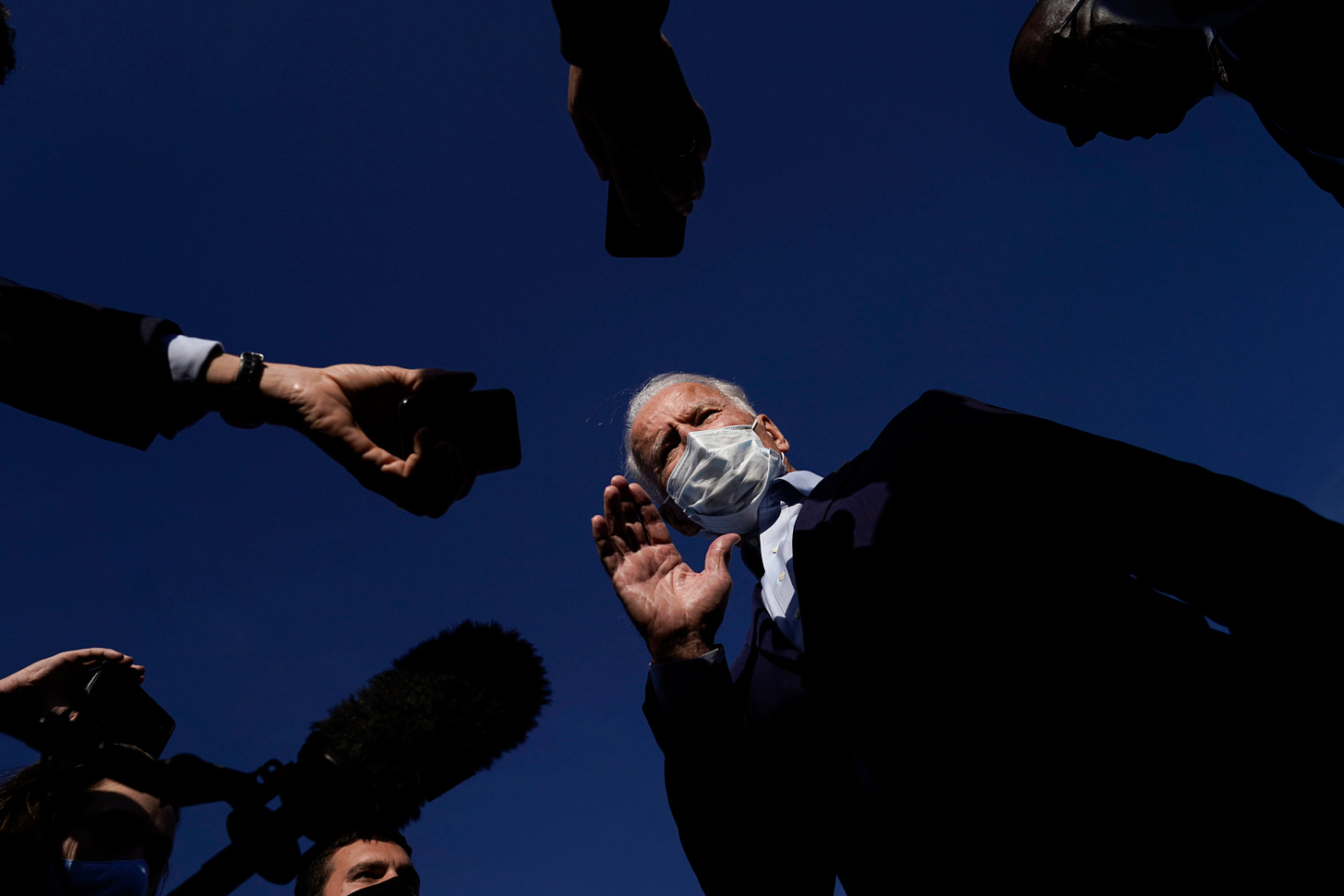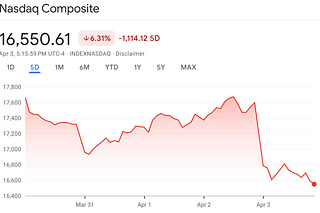
The Centrist Rush to Blame the Left for the Closer-Than-Expected Election
Is it too much to ask moderates to stop playing into the hands of right-wing propagandists?

Emotions ran high during election week. Anyone who had been paying attention knew that the results were likely to be ungainly and uncertain, but the waiting was still hard. Come election night, only one thing was clear: President Trump did not lose in an instant landslide. Though he did eventually lose badly and definitively, the margins were closer than expected, and, predictably, everyone has been in a scramble to figure out why. What did the polls get wrong this time? Where did Democrats go wrong? What did Trump do right?
The bad takes came fast. Of course, there is nothing unusual about commentators drawing sweeping and wrong conclusions before all the facts are in; that is a hazard of professional punditry. What was noteworthy in this case, though, was the tendency of some centrists to reflexively offer the same insta-explanation of the election’s apparent outcome: the vote was a backlash, they said, against the left and wokism.
For example, in response to a tweet purporting to show—based on the raw, uncalibrated exit poll data—that Trump did better in 2020 than 2016 among every race and gender except white men, Shadi Hamid claimed on election night that “a whole paradigm of understanding America is being challenged.”
The next day, Wednesday, November 4, Damon Linker kept alive the anti-woke argument, arguing in a column that “the Democratic Party whiffed and whiffed badly,” thanks mainly to their “toxic progressive-fantasy wishlist.”
On November 6, Andrew Sullivan claimed that the election outcome was “clearly and unequivocally a rejection of the woke left.”
On November 11, Zaid Jilani argued that the left’s electoral strategy had also been rejected: mobilization had been tried, and it had failed.
These prominent public intellectuals rushed to judgment based on exit polls that everyone knew (or should have known) were uncertain. They deployed this evidence to confirm what they already believed—and in so doing, neglected plausible alternative accounts. Worse, their knee-jerk arguments often replicated (and so legitimated) bad-faith right-wing assertions.
Bad Data, Bad Arguments
It all started with the exit polls. We have known for four years now that the polling in 2016 was off, and one of the big questions facing commentators this year was whether political polling could recover and prove more robust. Trumpism and the pandemic made 2020 such an unusual election year that caution should have been the order of the day. Instead, pundits saw what they wanted to see and ran with it.
Take the example of Andrew Sullivan. In his November 6 post, Sullivan—who this summer left his position at New York magazine over differences with his Vox Media colleagues about issues of race and identity—took early exit poll data and used it to spin out an elaborate theory about the unreliability of pre-election polling and the dangers of wokism. According to Sullivan, the polling in the run-up to the election got “the less inhibited white non-college-educated Trump voters right, but the graduates very wrong.” He goes on to explain how the exit polls prove that those pre-election polls were off by “a whopping 26-31 points among white [college] graduates,” and from this boldly infers that
the threat of wokeness both alienated educated white voters—and caused more of them to vote Trump than anyone expected. The problem with woke media is that they mislead Democrats who then misread the country.
Let’s take a close look at that argument and its flaws. First off, the exit poll data from the National Election Pool (NEP) that Sullivan relied on in his analysis was way off. Polling experts are able, imprecisely, to assess polls post-hoc by comparing actual election results to county-level census data. For now, it looks like the NEP’s exit-poll estimates of who actually voted was wrong, and this distorted demographic-based vote margins. G. Elliott Morris, a polling expert and critic of Sullivan’s take, shows that “counties with more college-educated whites swung hardest toward Democrats v 2016.” In other words, it looks like Sullivan’s claim about a big pro-Trump shift among white college graduates was plain wrong.
But even more problematic than the data sources or what Morris calls Sullivan’s “data illiteracy” are the flawed logical premises of his argument. Sullivan leans hard on uncertain and problematic exit polls both to make an argument about how wrong the earlier polling had been (as one Twitter wag put it, “We can’t trust the polls, and I have the (exit) polls to prove it!”) and to enter a serious charge against the “woke media”: “they mislead Democrats who then misread the country.” He goes so far as to declare that the “cold hard data” reveals a “mass secret vote” that in turn reveals that the “New York Times’ woke narrative” is simply a “niche elite belief, invented in a bubble academy,” et very much cetera. Sullivan openly declares his satisfaction at an anti-woke election outcome that he himself concocted. Who here is misleading whom?
Sullivan was hardly alone in spinning such a narrative. He is part of a much broader chorus eager to blame the left for the tight electoral margins to the neglect of counter-evidence and alternative explanations.
Writing for Persuasion—the centrist web magazine launched by Yascha Mounk earlier this year with the aim of defending liberal argument and persuasion—on Wednesday, November 11, Zaid Jilani took aim at the left’s theory of voter mobilization. According to Jilani, the theory went something like this:
The left-wing of the Democratic Party had the answer. To clobber Republicans at election after election, all they had to do was get out the vote. According to this theory, legions of would-be progressives weren’t casting ballots. But once activated, they would sweep the likes of Bernie Sanders and Alexandria Ocasio-Cortez into higher office, transforming America.
Let’s set aside whether this is a fair summation of the theory. Given that the Democratic nominee was Joe Biden, it’s pretty clear that the theory never got fully “activated.” Nevertheless, Jilani echoes suggestions that “the left-wing of the party actually alienated some traditional Democratic voters,” and concludes that the election was a repudiation of the leftist dream of mobilization. In the early aftermath of an incredibly fraught and uncertain election, and writing for an outlet called Persuasion, Jilani is confident that persuasion, not mobilization, won the day.
Jilani seems untroubled by the fact that Sanders’s mobilization experiment did not actually take place, that the 2020 election saw record-breaking voter-turnout, and that the final outcome hinged—somewhat dramatically, as you might recall—on unprecedented mobilization of (majority black) urban voters in Michigan, Pennsylvania, and Georgia.
Missing Alternatives
Where would Democrats have been without “woke” left mobilization? That was just one of the many questions that didn’t get asked in the hurry to blame progressives for Biden’s supposedly disappointing electoral margins. There are plenty of alternative explanations to explore.
First up is the one that has garnered the most media attention: the question of Democratic campaign strategy. In response to anti-left criticism, Rep. Alexandria Ocasio-Cortez published a Twitter thread on the subject worth attention from anyone who is serious about building up the Democratic party (her post-election interview with the New York Times and the response from her moderate Democratic colleague Rep. Conor Lamb are also worth reading). If AOC is right about the failures of the 2020 Democratic campaign—no door-knocking, not enough digital engagement—then that means there is real hope for Democrats in the two Georgia Senate runoffs in January and in the 2022 midterms.
And then there’s the matter of incumbency. In 2016 Trump was an outsider and a wild card, whom very few people expected to succeed. In 2020, he had actually been president for several years, and had had time in office to solidify his base. He scrambled after ways to look presidential after months of appearing like a bumbler during the pandemic—and was immensely aided by Amy Coney Barrett’s decision to accept the SCOTUS nomination at a crucial moment in the campaign. Seeing a dignified Judge Barrett standing next to Trump at the Rose Garden in September surely made some crucial Trump-skeptical GOP voters more comfortable casting their vote for him in November.
Finally, there is the power of cruelty and hate. Joe Biden ran a moderate campaign, pledging to “heal the soul of the nation” and “build back better”—elevated and admirably unifying, albeit vague, rhetoric. Donald Trump, by contrast, had no electoral platform to speak of. He ran as a brow-beating cult leader peddling a message of resentment and hatred. There are good reasons why ugly, dehumanizing rhetoric is said to undermine democracy, and one of those reasons is that it can be very powerful. This year, we saw red-scare talk of socialism, red-meat assertions of manliness, and overt appeals to white supremacy coming from the right. Sadly, it may be the case that Trumpist hate, not left activism, played the most significant role in the election outcome.
Replicating Right-Wing Lies
None of which is to claim that the left had no effect on the outcome of the election. There is anecdotal evidence that there were voters who were turned off by Black Lives Matter, by the protests and riots—and certainly by the caricature promulgated by Fox News and talk radio of socialists lurking behind every Biden yard sign. But given how polarized the electorate already is, and how little solid data is available even now, claims that the left was the decisive factor in the election outcome are unwarranted.
What is most disheartening about the centrists’ anti-woke narrative is how tidily it replicates specifics from bad-faith right-wing discourse. Sullivan speaks of everyone on the left in glib, mocking tones: “The GOP got the highest proportion of the minority vote since 1960! No wonder Charles Blow’s head exploded.” Democrats, Sullivan concludes, need to jettison “woke madness.”
And once again, it’s not just Sullivan. Here’s a passage from Damon Linker’s November 4 column for The Week:
So much for the Democratic fantasy—the one that seemingly never dies—of unobstructed rule. Democrats didn’t just want to win and govern in the name of a deeply divided nation’s fractured sense of the common good. No, they wanted to lead a moral revolution, to transform the country—not only enacting a long list of new policies, but making a series of institutional changes that would entrench their power far into the future. Pack the Supreme Court. Add left-leaning states. Break up others to give the left huge margins in the Senate. Get rid of the Electoral College. Abolish the police. Rewrite the nation’s history, with white supremacy and racism placed “at the very center.” Ensure “equity” not just in opportunity but in outcomes. Hell, maybe they’d even establish a Truth and Reconciliation Commission to teach everyone who voted for or supported the 45th president just how evil they really are.
I believe that Linker—whom I know a little, and whose work I respect and have learned from—is more likely to be overcompensating for his own biases than writing in bad faith, but this paragraph might as well have been composed by Tucker Carlson. And it’s false: Nothing on this list—not a single thing—was part of the official Democratic platform. Nor was any endorsed by the Biden campaign. Linker misleadingly takes a list of good-faith but highly controversial proposals—proposals that were each met with serious discussion and debate in civil society, exactly as a good liberal might hope—and presents it as the consensus view of the Democratic party. A party that, unlike the GOP, actually ran a centrist campaign.
Linker explicitly denies that this is what he or the GOP is up to (“this wasn’t just a function of the fallacy of composition, where one loony activist says something off the wall and the GOP amplifies it far beyond reason in order to tar the opposition unfairly”). But that just belittles the Democrats’ ideas further (as the sorts of things “loony activists” would propose), and lets the right off the hook for what is actually bad-faith nonsense.
Take Linker’s claim that Democrats seek “equity” of outcomes. This is based on a clumsy video put out by Kamala Harris that seeks to explain the difference between equity and equality, and that spread like wildfire on the online right in the days leading up to the election. I say the video is clumsy because it concludes with a picture of two people standing on a mountain together, and proclaims that “equitable treatment means we all end up at the same place.” The massive Twitter uproar that ensued proclaimed that Harris had . . . declared herself a Communist. This despite the fact that, in the next-to-last sentence of the video, Harris says that the aim of equitable policy is to make sure that “everyone can be on equal footing and then compete on equal footing”—which sounds a lot like equality of opportunity and (regulated) capitalism. The idea that Senator Harris is some kind of card-carrying Communist is absurd on its face, as she and anyone on the left will be happy to tell you. But it has been peddled by the right since she was named to the ticket.
It’s perfectly fine—of course—to disagree with the left and to fight hard for alternative solutions to problems. It’s another thing to misrepresent the Democratic party’s fairly mainstream positions as being far-out, while refusing even a minimal acknowledgement that the floated proposals are responding to anything serious. Is giving formal representation to Washington, D.C. residents or Puerto Ricans really such a “toxic” “fantasy” in the context of a constitutional democracy? Is it really a bad thing that some Democrats hope to enact “a long list of new policies” or to “transform the country,” given years of anti-government Republican obstruction and the disturbing rise of Trump? The debate about court-packing and reform hardly emerged in a vacuum and it involves, among other things, basic voting rights.
You may disagree with these ideas; they may be inadvisable as matters of politics or unwise as matters of policy; but it hardly seems fair to characterize them, as Linker does, as a “toxic progressive-fantasy wishlist.” As he worked to highlight the supposed damage done by leftist sloganeering, Linker twisted up the Democratic position beyond recognition and gave air to distortions of the right.
Our Asymmetrical Reality
As we close out 2020, it’s not hard to understand why leftists are so distrustful of the center. Again, I do not mean to suggest that the left is politically blameless, either in its outlook or its messaging. Some people surely are alienated by progressivism—and would be even without a right-wing propaganda machine. I am personally glad that Democrats went for the centrist “persuasion” experiment rather than testing the left flank’s mobilization theory with Senator Sanders as the presidential nominee. Conversely, many left-wing critiques of Never Trump conservatives and of endeavors like the Lincoln Project strike me as wrongheaded and untrue.
I have focused here on the centrists’ attacks because centrists tend to present themselves as objective and balanced arbiters of the country’s best interests. Instead what we too often get are commentators who are still, even after four long years of norm-busting Trumpism, deeply beholden to ingrained political both-sidesism, and obtuse about the role that they play in recycling damaging right-wing tropes. And even the most thoughtful and intellectually admirable among them, like Linker, sometimes succumb to the temptation to exaggerate threats coming from the left and minimize palpable anti-democratic illiberalism on the right.
In electing Joe Biden as the 46th president, America has stepped back from a frightening precipice. But Trumpism will still be with us, and how people talk about it—especially people in the center—will continue to matter.
I hope that, in the coming months and years, instead of reflexively attacking the base of the party whose voters successfully ousted Donald Trump, centrists will be more careful with evidence and arguments that flatter their own prejudices.
I hope that, in continuing to object to what they call identitarianism, they will not forget the racism, misogyny, and illiberalism of Trump’s GOP.
Above all, I hope that they will make it easier, rather than harder, for moderate members of Congress to get on board with much-needed Democratic legislation. They can do this by respecting, rather than mocking and antagonizing, their compatriots to the left. Even when they disagree. Perhaps even especially when the stakes are big and emotions are running high.











